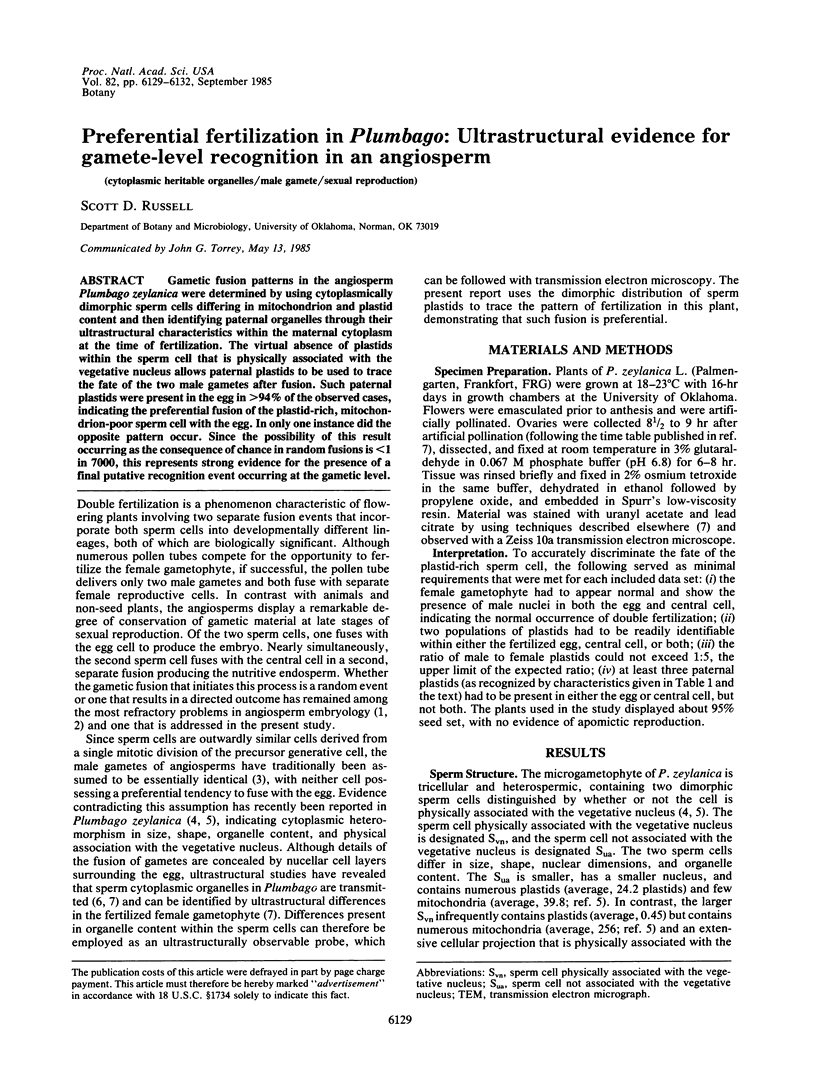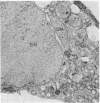Abstract
Gametic fusion patterns in the angiosperm Plumbago zeylanica were determined by using cytoplasmically dimorphic sperm cells differing in mitochondrion and plastid content and then identifying paternal organelles through their ultrastructural characteristics within the maternal cytoplasm at the time of fertilization. The virtual absence of plastids within the sperm cell that is physically associated with the vegetative nucleus allows paternal plastids to be used to trace the fate of the two male gametes after fusion. Such paternal plastids were present in the egg in >94% of the observed cases, indicating the preferential fusion of the plastid-rich, mitochondrion-poor sperm cell with the egg. In only one instance did the opposite pattern occur. Since the possibility of this result occurring as the consequence of chance in random fusions is <1 in 7000, this represents strong evidence for the presence of a final putative recognition event occurring at the gametic level.
Keywords: cytoplasmic heritable organelles, male gamete, sexual reproduction
Full text
PDF



Images in this article
Selected References
These references are in PubMed. This may not be the complete list of references from this article.
- Roman H. Directed Fertilization in Maize. Proc Natl Acad Sci U S A. 1948 Feb;34(2):36–42. doi: 10.1073/pnas.34.2.36. [DOI] [PMC free article] [PubMed] [Google Scholar]
- Russell S. D. Participation of Male Cytoplasm During Gamete Fusion in an Angiosperm, Plumbago zeylanica. Science. 1980 Oct 10;210(4466):200–201. doi: 10.1126/science.210.4466.200. [DOI] [PubMed] [Google Scholar]






